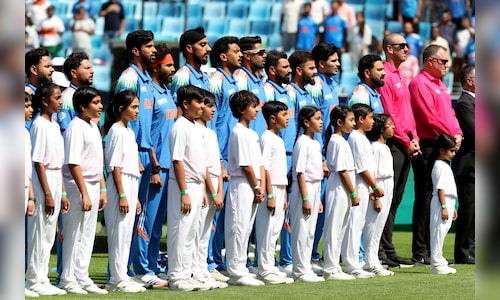This shift is evident in how agencies design their representation models. A PwC report on the sports market highlights that an athlete’s brand value can be significantly enhanced when marketing strategies align with their persona, fan demographics, and digital engagement.
According to Nielsen’s 2023 sports industry report, 80% of fans are more likely to engage with athletes who present an authentic and consistent image both online and offline. This consistency is crucial in building long-term, sustainable brand relationships.
Also Read: ‘Think smart, invest wisely’: Puma brand ambassador PV Sindhu shares mantra on managing money
The changing face of athlete management
Athlete management has moved beyond securing endorsement deals—once the standard practice—to a more holistic approach that considers personality, career trajectory, and brand positioning. Rishabh Pant’s co-manager, Anant Arora, spoke about this evolving landscape, stressing the need for customised representation strategies.
“No two athletes are the same, and their outreach strategies must reflect that. Brand identity and positioning are incredibly important. It’s essential to maintain consistency across all channels. A player’s social media presence should align seamlessly with their offline persona,” says Arora, who has also managed Ravindra Jadeja, Yuvraj Singh, Kuldeep Yadav, amongst others.
A 2024 SportsPro Media study reinforces this perspective, revealing that over 65% of fans prefer athletes who maintain a consistent image across their online and offline presence. This shift has redefined talent representation, making it more about building an identity that resonates with a wider audience rather than just promoting sponsorships.
Beyond sponsorships: The rise of meaningful collaborations
The traditional model of transactional sponsorships is giving way to long-term brand-athlete collaborations that focus on storytelling and engagement. A KPMG report on global sports sponsorship trends found that 72% of successful brand-athlete partnerships extend beyond standard endorsements to incorporate content creation and immersive fan engagement.
Arora explains how this shift has impacted his approach to athlete branding:
“Given the rapid growth of the sports industry, each athlete requires a unique strategy. With Rishabh, we focus on long-term career planning rather than short-term gains. My experience with multiple athlete-brand partnerships has helped me understand industry trends and anticipate what’s next. The key is adaptability—securing a deal isn’t enough; it must align with both the athlete’s and the brand’s vision.”
In today’s digital age, an athlete’s marketability is heavily dictated by their social media presence. Rishabh Pant, who has over 15 million followers across platforms, is a prime example of how carefully curated digital identities can amplify brand value. India’s diverse cultural and linguistic landscape presents unique challenges for sports marketing, requiring brands to adopt hyper-localised engagement strategies.
“Consumer engagement varies across India’s regions. While marketing strategies have traditionally been focused on metros like Mumbai, Delhi, and Bengaluru, brands seeking a pan-India presence must also engage audiences in regions like the East, which is a crucial consumer base. Digital platforms, influencers, and pop culture play a vital role in shaping outreach strategies today,” said Arora, whose OneByTwo Entertainment primarily caters to the eastern market.
Sponsorship market and the role of global brands
India’s sports sponsorship market is currently valued at over $1.5 billion, spanning homegrown brands and global giants like Adidas. Managing these partnerships requires a structured approach, particularly when dealing with international brands that have strict compliance and branding mandates.
One of the most notable collaborations in recent years has been Rishabh Pant’s return to Adidas, joining a legacy of Indian cricketers like Sachin Tendulkar and Rohit Sharma. Arora shared insights into what goes into securing and maintaining such high-profile deals:
“Working with brands like Adidas has been an incredible learning experience. They come with specific mandates and compliance requirements, so it’s essential to ensure that every aspect of the partnership aligns with their expectations.”
A McKinsey report on global sports sponsorships found that 68% of brands prioritise collaborations that align with an athlete’s core values rather than opting for short-term endorsements. This trend is reshaping the Indian sports business, pushing stakeholders to create value-driven partnerships.
Future of sports business in India
With India’s sports economy projected to grow at a CAGR of 9% over the next five years, the industry presents immense opportunities for athletes, brands, and agencies.
Emerging technologies such as AI-driven fan engagement, NFT-based athlete branding, and immersive sports experiences are set to redefine how brands and players interact.
As the industry matures, those at the forefront of this transformation—including athlete managers, marketing strategists, and digital content creators—will play a pivotal role in shaping its future. The key to success will lie in adaptability, innovation, and crafting authentic athlete-brand narratives that resonate with audiences.


